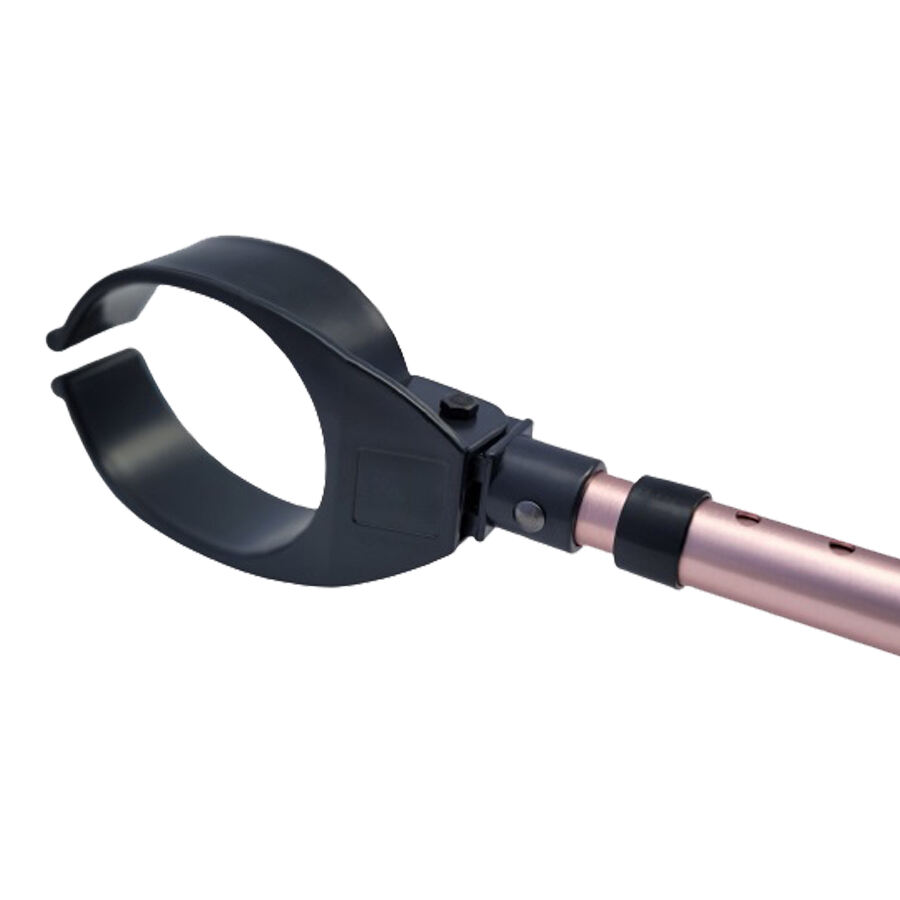L'évolution de la technologie d'assistance à la mobilité des mains
À mesure que notre population vieillit, le maintien de l'indépendance et de la qualité de vie devient de plus en plus important, en particulier en ce qui concerne la fonction et la dextérité des mains. Un dispositif de main robotisé représente une avancée révolutionnaire dans la technologie d'assistance, offrant de nouveaux espoirs et des solutions pratiques aux personnes âgées aux prises avec des difficultés de mobilité des mains. Ces appareils sophistiqués combinent une robotique de pointe et des principes thérapeutiques pour améliorer la force de la poignée, le contrôle des doigts et le fonctionnement général de la main.
La technologie moderne des aides a évolué de simples aides mécaniques à des systèmes intelligents et réactifs qui s'adaptent aux besoins individuels. L'intégration de capteurs, d'actionneurs et d'algorithmes avancés permet à ces appareils de fournir un soutien précis tout en favorisant l'engagement actif de l'utilisateur. Cette évolution technologique marque une étape importante dans les soins et la réadaptation gériatriques.
Comprendre la technologie des mains robotisées
Composants principaux et fonctionnalité
Un dispositif de main robotique comprend plusieurs composants sophistiqués fonctionnant en harmonie. La structure externe intègre généralement des matériaux légers et durables qui épousent l'anatomie de la main de l'utilisateur. Des capteurs intégrés surveillent en continu les intentions de mouvement et l'activité musculaire, tandis que des microprocesseurs interprètent ces signaux pour fournir une assistance appropriée. Les actionneurs du dispositif offrent un soutien doux mais efficace, aidant les utilisateurs à accomplir leurs tâches quotidiennes avec plus de confiance et de précision.
La technologie intègre des algorithmes adaptatifs qui apprennent à partir des schémas de mouvement de l'utilisateur, optimisant progressivement le niveau d'assistance fourni. Cette personnalisation garantit que le dispositif devient plus efficace au fil du temps, en répondant aux besoins et capacités uniques de chaque utilisateur.
Fonctionnalités intelligentes et interface utilisateur
Les dispositifs modernes de main robotique sont équipés de commandes intuitives et d'interfaces conviviales. Les écrans tactiles ou les applications mobiles permettent aux utilisateurs d'ajuster les paramètres, de suivre l'évolution et de personnaliser les niveaux d'assistance. Certains modèles disposent d'une connectivité sans fil, ce qui permet aux professionnels de santé de surveiller à distance les habitudes d'utilisation et d'effectuer les ajustements nécessaires pour optimiser les performances.
La conception de l'interface privilégie la simplicité et l'accessibilité, garantissant que les personnes âgées peuvent utiliser l'appareil de manière autonome. Des mécanismes de rétroaction visuelle et tactile aident les utilisateurs à comprendre quand l'appareil fournit une assistance active, favorisant une interaction naturelle et confortable.
Avantages pour les activités quotidiennes
Force de préhension et contrôle améliorés
L'un des principaux avantages de l'utilisation d'un dispositif de main robotique est l'amélioration immédiate de la force de préhension et du contrôle des doigts. Les utilisateurs font état d'une plus grande confiance lors de la manipulation d'objets du quotidien tels que des tasses, des ustensiles et des articles de soins personnels. Le dispositif assure un soutien constant tant lors d'activités nécessitant une prise en puissance, comme tenir un bocal, que lors de tâches de précision telles que boutonner ses vêtements ou écrire.
La capacité de la technologie à moduler les niveaux d'assistance garantit que les utilisateurs maintiennent un engagement musculaire actif tout en recevant le soutien nécessaire. Cet équilibre aide à prévenir une dépendance excessive au dispositif tout en favorisant des schémas de mouvement naturels et la mémoire musculaire.
Autonomie dans les soins personnels
Les activités d'hygiène personnelle et de soins personnels deviennent nettement plus faciles grâce au soutien d'un dispositif de main robotique. Les utilisateurs gagnent en autonomie pour des tâches telles que se brosser les dents, se coiffer ou s'habiller. Cette capacité accrue améliore non seulement le bien-être physique, mais renforce également le sentiment de dignité et d'autosuffisance.
La conception étanche et la robustesse du dispositif permettent son utilisation lors de diverses activités de toilette, assurant un soutien constant tout au long des routines quotidiennes. Cette assistance complète contribue à réduire la dépendance vis-à-vis des aidants et favorise le bien-être émotionnel grâce à une autonomie accrue.
Applications thérapeutiques et rééducation
Entraînement progressif à la force
Un dispositif de main robotique constitue un excellent outil pour l'entraînement progressif de la force et la rééducation. La technologie peut être programmée pour augmenter progressivement les niveaux de résistance, incitant les utilisateurs à développer leur force tout en maintenant la sécurité et une bonne forme. Cette approche structurée de l'exercice permet d'éviter les effets de plateau et assure des progrès constants dans l'amélioration de la fonction de la main.
L'utilisation régulière du dispositif dans des contextes thérapeutiques a donné des résultats prometteurs quant au maintien et à l'amélioration de la force de la main, notamment chez les personnes touchées par une faiblesse musculaire liée à l'âge ou à des affections neurologiques. Les retours constants et le soutien fournis par le dispositif aident les utilisateurs à rester motivés et engagés dans leur parcours de rééducation.
Plasticité neuronale et apprentissage moteur
La nature interactive d'un dispositif de main robotique favorise la neuroplasticité — la capacité du cerveau à former de nouvelles connexions neuronales et à s'adapter aux changements. Grâce à une utilisation répétée et à des mouvements guidés, les utilisateurs peuvent potentiellement améliorer leur fonction naturelle de la main, même lorsqu'ils ne portent pas le dispositif. Ce phénomène est particulièrement précieux pour les personnes âgées en cours de rétablissement après un accident vasculaire cérébral ou confrontées à d'autres défis neurologiques.
La pratique régulière avec le dispositif encourage la formation de nouveaux schémas moteurs et renforce les voies neuronales existantes. La rétroaction immédiate et la réussite dans l'exécution des tâches aident à consolider des expériences d'apprentissage positives, contribuant ainsi à une amélioration à long terme de la fonction de la main.
Développements et innovations futurs
Technologies avancées de détection
La prochaine génération de dispositifs de main robotique devrait intégrer des technologies de détection encore plus sophistiquées. Celles-ci pourraient inclure des systèmes de rétroaction tactile améliorés, offrant aux utilisateurs des sensations tactiles plus naturelles et un meilleur contrôle de la pression de préhension. Les progrès réalisés dans les capteurs miniaturisés devraient conduire à des conceptions plus compactes et plus confortables, tout en conservant une haute fonctionnalité.
Des recherches sont en cours sur les interfaces cerveau-ordinateur qui pourraient permettre une commande plus intuitive des dispositifs de main robotique. Ces avancées promettent une intégration encore plus fluide entre l'intention de l'utilisateur et la réponse du dispositif, ce qui pourrait révolutionner la manière dont nous abordons la technologie d'assistance à la main.
Intégration avec les systèmes intelligents À la maison Les systèmes
Les prothèses de main robotiques futures pourraient intégrer une connectivité améliorée avec les systèmes domotiques, permettant une meilleure adaptation à des tâches et environnements spécifiques. Cette intégration pourrait permettre à l'appareil d'ajuster automatiquement son niveau d'assistance en fonction des activités détectées ou des facteurs environnementaux, offrant ainsi un soutien plus contextuel et approprié.
La possibilité de collecte et d'analyse de données via des systèmes connectés pourrait également conduire à des programmes thérapeutiques plus personnalisés et efficaces, avec des ajustements en temps réel basés sur les habitudes d'utilisation et les indicateurs de progression.
Questions fréquemment posées
Combien de temps faut-il pour s'habituer à utiliser une prothèse de main robotique ?
La plupart des utilisateurs déclarent se sentir à l'aise avec les fonctions de base après 1 à 2 semaines d'utilisation régulière. L'adaptation complète et les bénéfices optimaux sont généralement atteints en 4 à 6 semaines, bien que cela puisse varier selon les circonstances individuelles et les habitudes d'utilisation. Une formation professionnelle et un accompagnement durant la période initiale améliorent considérablement le processus d'adaptation.
Un dispositif de main robotique peut-il être porté toute la journée ?
Bien que les dispositifs soient conçus pour une utilisation prolongée, il est recommandé d'augmenter progressivement le temps de port sous la supervision d'un professionnel. La plupart des utilisateurs commencent par 2 à 3 heures par jour et peuvent augmenter progressivement selon le confort et les besoins. Des pauses régulières sont importantes pour maintenir l'activité naturelle des muscles et éviter une dépendance excessive.
Quel entretien est nécessaire pour un dispositif de main robotique ?
L'entretien courant comprend généralement un nettoyage quotidien, une recharge hebdomadaire de la batterie et des mises à jour logicielles périodiques. Un service professionnel est recommandé tous les 6 à 12 mois afin d'assurer des performances optimales et une longue durée de vie. Les utilisateurs doivent également effectuer régulièrement des vérifications d'étalonnage pour maintenir une précision dans les niveaux de réponse et d'assistance.

 EN
EN









































